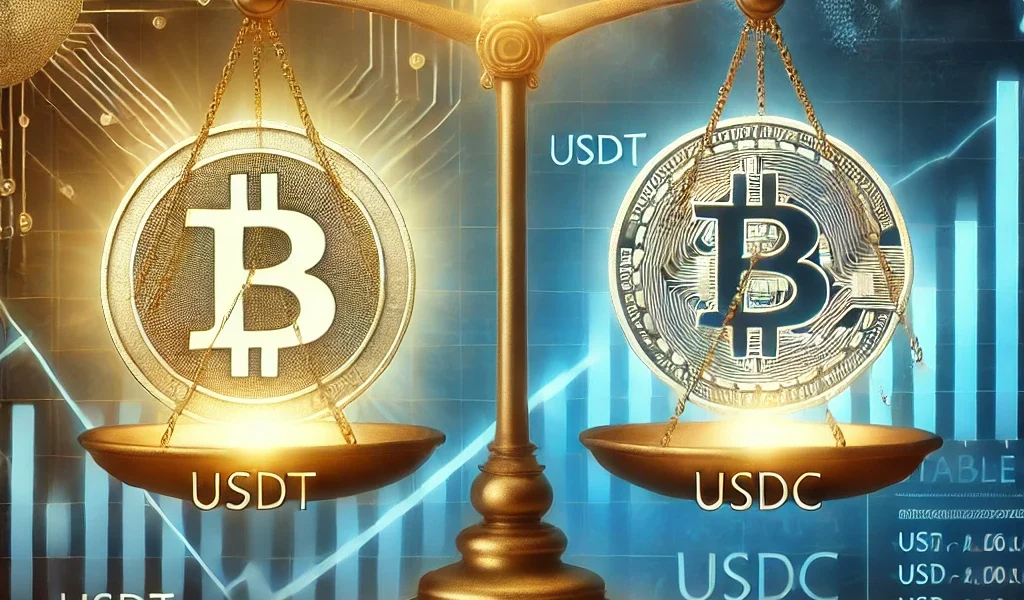Introduction
Cryptocurrency investments are often associated with high volatility and rapid price fluctuations. However, stablecoins have emerged as a solution to counteract this volatility while still providing the benefits of digital assets. As their name suggests, stablecoins are designed to maintain a stable value, typically pegged to fiat currencies like the US dollar or other assets such as gold. But are stablecoins truly a safe investment, or do they come with hidden risks? This guide explores the role of stablecoins in crypto investing, examining their advantages, potential risks, and strategies for their optimal use.
What Are Stablecoins?
Stablecoins are a category of cryptocurrencies designed to minimize price volatility by pegging their value to a stable asset. The primary types of stablecoins include:
- Fiat-backed stablecoins: Pegged to fiat currencies like the USD (e.g., USDT, USDC, BUSD).
- Commodity-backed stablecoins: Backed by assets like gold or silver (e.g., PAXG, DGX).
- Crypto-backed stablecoins: Collateralized by other cryptocurrencies (e.g., DAI, sUSD).
- Algorithmic stablecoins: Maintain their value through smart contract algorithms and supply adjustments (e.g., UST, FRAX).
Advantages of Stablecoins in Crypto Investing
1. Hedging Against Market Volatility
One of the primary reasons investors use stablecoins is to avoid the extreme price swings of traditional cryptocurrencies like Bitcoin and Ethereum. Stablecoins offer a way to preserve capital while remaining in the crypto ecosystem.
2. Liquidity and Quick Transactions
Stablecoins provide high liquidity, allowing traders and investors to quickly move funds across exchanges or between different crypto assets. They are widely accepted on most platforms and can be easily exchanged for other cryptocurrencies.
3. Facilitating Decentralized Finance (DeFi)
Stablecoins play a crucial role in DeFi applications, such as lending, borrowing, and yield farming. They allow users to earn interest, provide liquidity, and participate in various DeFi protocols without exposure to high volatility.
4. Cross-Border Payments and Remittances
Stablecoins enable fast and cost-effective cross-border transactions compared to traditional banking systems. Many people use stablecoins to send money internationally, bypassing high fees and delays associated with traditional financial institutions.
5. Store of Value in Bear Markets
During market downturns, investors often convert their holdings into stablecoins to protect their assets from depreciation. This makes stablecoins an effective store of value during uncertain times.
Risks Associated with Stablecoins
1. Regulatory Uncertainty
Governments and financial regulators are increasingly scrutinizing stablecoins due to concerns about money laundering, financial stability, and investor protection. Any unfavorable regulations could impact their adoption and usability.
2. Centralization Risks
Many stablecoins, such as USDT and USDC, are issued by centralized entities that control their supply and reserves. If these issuers face legal troubles or fail to maintain adequate reserves, stablecoin holders could face losses.
3. Peg Stability Risks
Although stablecoins aim to maintain a fixed value, some have depegged from their intended price due to market conditions or insufficient collateral. For instance, algorithmic stablecoins like TerraUSD (UST) have collapsed, leading to massive losses for investors.
4. Counterparty and Reserve Transparency Issues
Investors must trust that stablecoin issuers have sufficient reserves to back their tokens. Lack of transparency regarding reserve holdings has raised concerns about whether certain stablecoins are fully backed.
5. Smart Contract and Security Vulnerabilities
Crypto-backed and algorithmic stablecoins rely on smart contracts, which can be vulnerable to hacking and exploitation. If a stablecoin’s smart contract is compromised, users may lose funds.
How to Safely Invest in Stablecoins
1. Choose Reputable Stablecoins
Opt for well-known and widely used stablecoins such as USDT, USDC, or DAI, which have a strong track record and regulatory compliance.
2. Diversify Stablecoin Holdings
Instead of relying on a single stablecoin, diversify holdings across multiple stablecoins to reduce counterparty risks.
3. Verify Reserve Transparency
Ensure that the stablecoin issuer provides regular audits and transparent reports about their reserves. This can help determine whether the stablecoin is adequately backed.
4. Use Secure Wallets
Store stablecoins in reputable wallets (hardware or software) that provide strong security features to protect against hacks and unauthorized access.
5. Stay Informed About Regulations
Keep track of regulatory developments related to stablecoins, as government policies may impact their value and usability in the future.
Conclusion
Stablecoins offer a unique combination of stability, liquidity, and utility within the cryptocurrency ecosystem. They provide investors with a safe haven during volatile market conditions and serve as an essential component in DeFi applications and cross-border payments. However, stablecoins also come with inherent risks, including regulatory scrutiny, centralization concerns, and potential depegging issues.
By understanding these risks and implementing safe investment strategies, investors can leverage stablecoins effectively while minimizing exposure to potential downsides. As the crypto market evolves, stablecoins are likely to play an increasingly important role in digital finance, making them a valuable tool for both new and experienced investors.
Disclaimer: This article is for informational purposes only and does not constitute financial or investment advice. Always conduct thorough research and consult with a professional before making any investment decisions.




